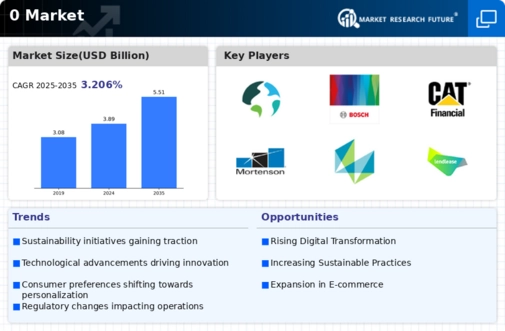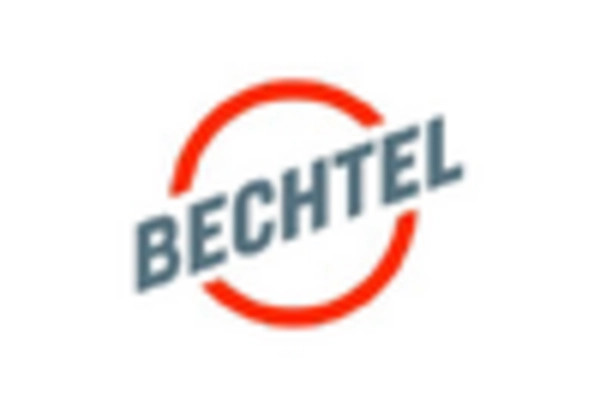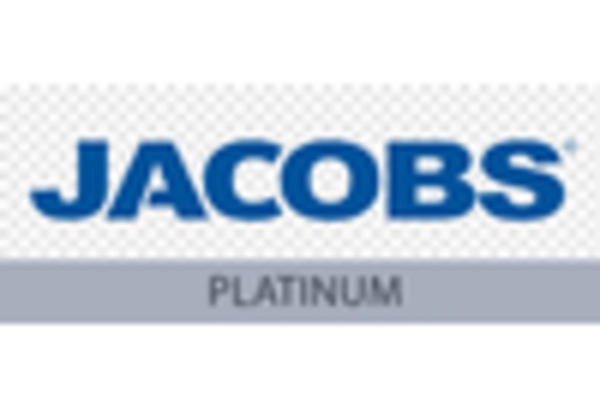Regulatory Compliance
Regulatory compliance is a critical driver in the construction 4-0 market, as companies must adhere to a myriad of federal, state, and local regulations. These regulations often pertain to safety standards, environmental impact, and labor laws. The construction industry in the US is subject to strict guidelines, which can influence project timelines and costs. For example, compliance with OSHA regulations can lead to increased safety measures, potentially reducing workplace accidents by 40%. Additionally, adherence to environmental regulations can necessitate the use of sustainable materials and practices, which may initially increase costs but can lead to long-term savings and improved public perception. As regulatory frameworks evolve, the construction 4-0 market must adapt, ensuring that compliance is integrated into project planning and execution.
Technological Advancements
The construction 4-0 market is experiencing a surge in technological advancements that are reshaping the industry landscape. Innovations such as Building Information Modeling (BIM), drones, and augmented reality are enhancing project efficiency and accuracy. For instance, the integration of BIM has been shown to reduce project costs by up to 20% and improve timelines by 30%. These technologies facilitate better collaboration among stakeholders, leading to more informed decision-making. Furthermore, the adoption of IoT devices allows for real-time monitoring of construction sites, which can potentially decrease downtime and enhance safety protocols. As these technologies continue to evolve, they are likely to drive significant growth in the construction 4-0 market, making it imperative for companies to invest in these tools to remain competitive.
Labor Shortages and Skills Gap
Labor shortages and the skills gap present significant challenges for the construction 4-0 market. The industry is currently facing a shortage of skilled labor, with estimates suggesting that the US will need an additional 1 million workers by 2026 to meet demand. This shortage is exacerbated by an aging workforce and a lack of interest among younger generations in pursuing careers in construction. Consequently, companies are increasingly investing in training programs and partnerships with educational institutions to bridge this skills gap. By fostering a new generation of skilled workers, the construction 4-0 market can enhance productivity and innovation. Moreover, addressing labor shortages is essential for maintaining project timelines and quality standards, making it a critical focus for industry stakeholders.
Investment in Smart Infrastructure
Investment in smart infrastructure is becoming increasingly vital for the construction 4-0 market. As urbanization accelerates, cities are seeking to enhance their infrastructure to accommodate growing populations. This trend is reflected in the projected $4 trillion investment in infrastructure improvements over the next decade. Smart infrastructure, which incorporates technology to improve efficiency and sustainability, is at the forefront of this investment. For instance, smart traffic management systems can reduce congestion and improve air quality, aligning with sustainability goals. The integration of smart technologies in construction projects not only enhances operational efficiency but also attracts funding and partnerships, thereby driving growth in the construction 4-0 market. Companies that prioritize smart infrastructure are likely to gain a competitive edge in this evolving landscape.
Sustainability and Green Building Practices
Sustainability and green building practices are becoming central to the construction 4-0 market, driven by both consumer demand and regulatory pressures. The US market is witnessing a shift towards eco-friendly construction methods, with green building projects expected to account for 50% of all new construction by 2026. This trend is fueled by the increasing awareness of climate change and the need for energy-efficient buildings. Implementing sustainable practices can lead to reduced operational costs, with energy-efficient buildings saving up to 30% on energy bills. Additionally, the use of sustainable materials can enhance a company's reputation and attract environmentally conscious clients. As the construction 4-0 market evolves, embracing sustainability will not only be a competitive advantage but also a necessity for long-term viability.

















Leave a Comment